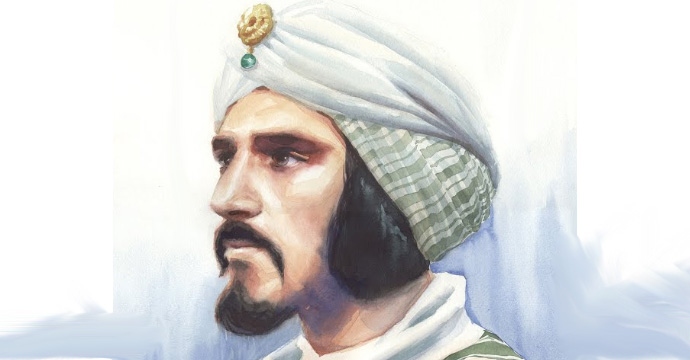Google Arts & Culture: Imaginery potrait of Al-Kindi ©1001 Inventions Abu Yusuf Yaqub ibn Ishaq al-Sabbah (801-873); Kufa, Iraq; cryptanalyst, mathematician, astronomer, physician, and geographer.
To avoid vital secrets falling into the wrong hands, messages are scrambled (encrypted) so that only someone with the right code can unscramble them. A famous case of encryption was during World War II when the Germans used a typewriter-like machine, called Enigma, to encrypt military messages before playing them on the radio. These were decrypted by a group of Polish code breakers from the Cipher Bureau and British code breakers from Bletchley Park.
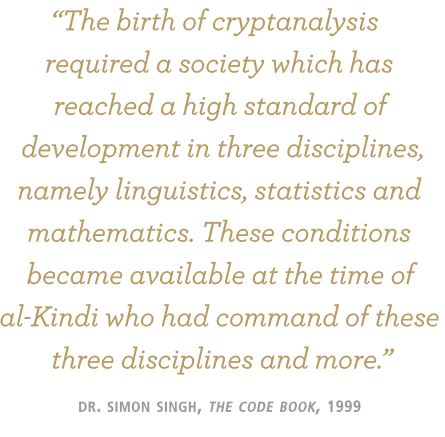
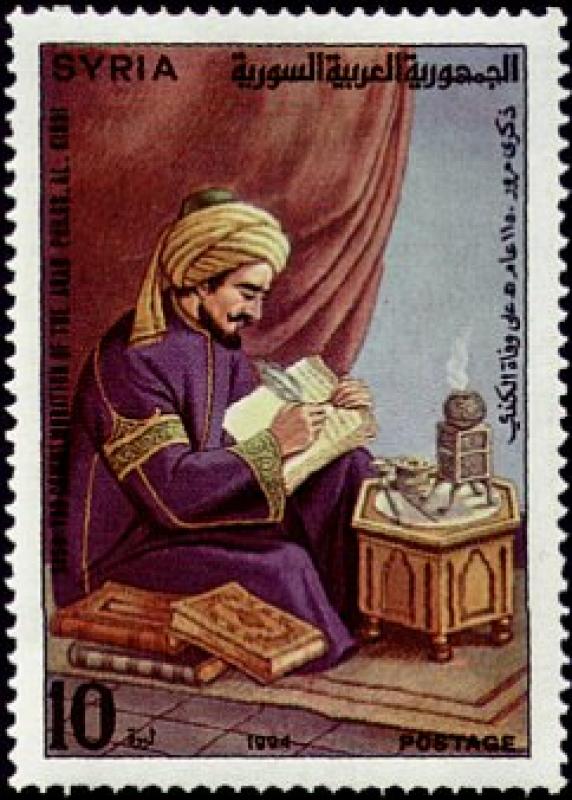 Al-Kindi as depicted in a Syrian post stamp.(Source) Al-Kindi as depicted in a Syrian post stamp.(Source) |
These 20th-century problem solvers were carrying on the code-breaking tradition first written about by ninth-century polymath Al-Kindi. At this time the mail was delivered by birds, so messages had to be light in weight, and the confidential ones were encrypted.
He revolutionised cryptography when he wrote A Manuscript on Deciphering Cryptographic Messages.
Part of this included a description of the method of frequency analysis, which means he noticed that if a normal letter is replaced with a different letter or symbol, the new letter will take on all the characteristics of the original one.
If we look at the English language the letter e is the most common, accounting for 13 percent of all letters. So, if e is replaced by the symbol #, # would become the most common symbol, accounting for 13 percent of the new symbols. A cryptanalyst can then work out that # actually represents e.
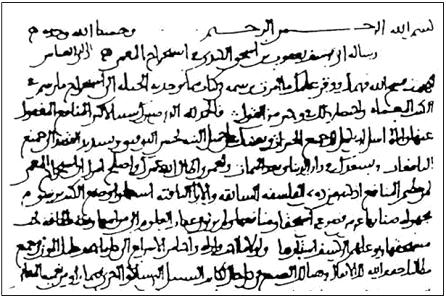 First page of Al-Kindi’s Treatise on Deciphering Cryptographic Messages which was recently rediscovered in the Ottoman archives in Istanbul. This text is the first known recorded explanation of cryptanalysis based on the method of frequency analysis. (Source)
First page of Al-Kindi’s Treatise on Deciphering Cryptographic Messages which was recently rediscovered in the Ottoman archives in Istanbul. This text is the first known recorded explanation of cryptanalysis based on the method of frequency analysis. (Source)
From studying the Arabic text of the Quran closely, Al-Kindi noticed the characteristic letter frequency, and laid cryptography’s foundations, which led many cryptographers from European Renaissance states to devise other schemes to combat it. Even though Al-Kindi developed methods that enabled greater encryption and code-breaking 1,100 years ago, the actual word “crypt-analysis” is relatively recent and was first coined by a man named William Friedman in 1920.

An Enigma machine was used to encrypt military messages in World War II. It was Al-Kindi in the ninth letters in a passage of text. century who laid the foundation of cryptography. (Source: 1001 Inventions: The Enduring Legacy of Muslim Civilization, 3rd edition, page 259)
Frequency analysis is now the basic tool for breaking classical ciphers or codes that use the basic, plain-text alphabet. It relies on linguistic and statistical knowledge of plain text language, and good problem-solving skills.
Modern ciphers are a lot more complex, but back in the days of World War II, Britain and America recruited code breakers by placing crossword puzzles in major newspapers and running contests for those who could solve them the fastest.
 One way to solve an encrypted message, if we know its language, is to find a different plain text of the same language long enough to fill one sheet or so, and then we count the occurrences of each letter. We call the most frequently occurring letter the ‘first,’ the next most occurring letter the ‘second,’ the following most occurring the ‘third,’ and so on, until we account for all the different letters in the plaintext sample…
One way to solve an encrypted message, if we know its language, is to find a different plain text of the same language long enough to fill one sheet or so, and then we count the occurrences of each letter. We call the most frequently occurring letter the ‘first,’ the next most occurring letter the ‘second,’ the following most occurring the ‘third,’ and so on, until we account for all the different letters in the plaintext sample…
Then we look at the cipher text we want to solve and we also classify its symbols. We find the most occurring symbol and change it to the form of the ‘first’ letter of the plain-text sample, the next most common symbol is changed to the form of the ‘second’ letter, and so on, until we account for all symbols of the cryptogram we want to solve.”
Al-Kindi in His Ninth-Century Manuscript on Deciphering Cryptographic Messages
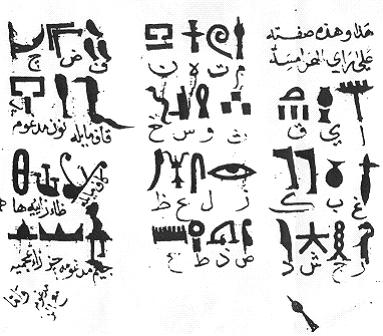
Egyptian alphabet according to Arab Cryptologist Ibn Wahshiyya. Cryptology, the art and science of making and breaking codes, has a history that is older than 4000 years.


